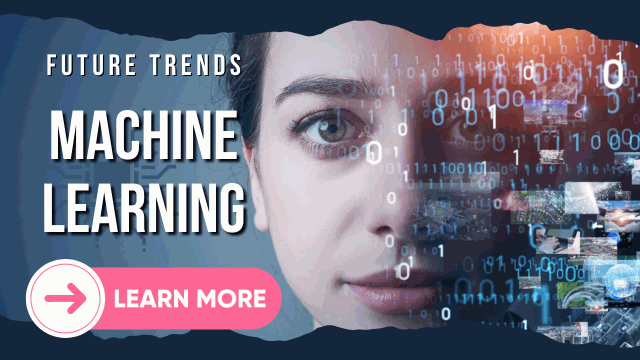Machine Learning Explained with Examples
1. Introduction to Machine Learning
Machine Learning has surfaced as a transformative technology that has revolutionized colorful diligence. In this comprehensive companion, we will claw into the fundamentals of machine Learning, its literal environment, and its significance in moment’s world.

♦ Definition of Machine Learning
Machine Learning is a subfield of artificial intelligence (AI) that focuses on the development of algorithms and models that enable computers to learn and make prognostications or opinions without being explicitly programmed. It relies on data and statistical ways to ameliorate its performance over time.
♦ Importance of Machine Learning
Machine Learning plays a vital part in automating tasks, making data- driven opinions, and unleashing precious perceptivity from vast datasets. Its operations gauge across diligence similar as healthcare, finance, and technology, driving invention and effectiveness.
♦ Historical Overview
The roots of machine Learning can be traced back to themid-20th century when settlers like Alan Turing and Arthur Samuel laid the foundation for computer- grounded Learning. Over the times, machine Learning has evolved significantly, with improvements in algorithms, calculating power, and data vacuity.
2. Types of Machine Learning
Machine Learning encompasses colorful approaches, each suited to different problem disciplines. Let’s explore the main types of machine Learning.
1) Supervised Learning
• Explanation
Supervised Learning involves training a model on labeled data, where the algorithm learns to make prognostications grounded on input- affair dyads. It’s generally used for bracket and retrogression tasks.
• Examples
It includes spam email classifying, Recognition of images and prices od house that based on features like size and location.
• Application
Supervised Learning is extensively used in healthcare for complaint opinion, in finance for credit scoring, and in natural language processing for sentiment analysis.
2) Unsupervised Learning
• Explanation
Unsupervised Learning deals with unlabeled data, where the algorithm discovers patterns, structures, or connections within the data without unequivocal guidance. The common tasks of unsupervised learning are clustering and dimensionality reduction.
• Examples
Clustering analogous client biographies in marketing, content modeling in text data, and reducing the dimensionality of high- dimensional datasets are examples of unsupervised Learning.
• Application
Unsupervised Learning is employed in recommendation systems, anomaly discovery in cybersecurity, and client segmentation in e-commerce.
♦ Reinforcement Learning
• Explanation
Reinforcement Learning focuses on training agents to make successional opinions in a terrain to maximize an accretive price. It employs a trial- and- error approach, learning from both successes and failures.
• Examples
Reinforcement Learning powers independent robots, game- playing AI (e.g., AlphaGo), and tone- driving buses.
• Application
In addition to robotics and gaming, reinforcement Learning is used in optimizing force chain operation and energy-effective control systems.
♦ Semi-Supervised Learning
• Explanation
Semi-supervised Learning combines rudiments of both supervised and unsupervised Learning. It leverages a small quantum of labeled data and a larger pool of unlabeled data to ameliorate model performance.
• Examples
Text bracket with a limited labeled dataset and a vast collection of unlabeled textbooks is a common use case for semi-supervised Learning.
• Application
Semi-supervised Learning is precious in scripts where carrying labeled data is expensive or time- consuming, similar as medical image analysis.
♦ Deep Learning
• Explanation
Deep Learning is a subset of machine Learning that employs neural networks with multiple layers (deep neural networks) to learn intricate patterns and representations from data.
• Neural Networks
Deep neural networks correspond of connected layers of artificial neurons, each sub caste rooting decreasingly abstract features from the input data.
• Application
Deep Learning powers image recognition in independent vehicles, speech recognition in virtual sidekicks, and natural language understanding in chatbots.
3. Machine Learning Workflow
To effectively harness the power of machine Learning, a methodical workflow is followed
♦ Data Collection and Preprocessing
Data Sources
Gathering applicable data from colorful sources, including detectors, databases, or web scraping.
Data drawing
Collecting similar data from different sources, include sensors, database and web scrapping.
Data Transformation
Converting data into a suitable format, performing point scaling, and garbling categorical variables.
♦ Feature Engineering
Point Selection
Choosing the most applicable features to train the model and reduce dimensionality.
Point birth
Creating new features or representations from being bones to capture essential information.
♦ Model Selection
Choosing Algorithms
Opting applicable machine learning algorithms grounded on the problem type and dataset characteristics.
Hyperparameter Tuning
Hyperparameter tuning optimizes the performance of the model.
♦ Training and Testing
Splitting Data
Dividing the dataset into training, confirmation, and testing sets to assess model performance.
Training the Model
Fitting the chosen model to the training data to learn patterns and make prognostications.
Assessing the Model
Assessing the model’s performance using applicable evaluation criteria for the task.
♦ Model Deployment
Planting in Real- World operations
Integrating the trained model into product systems or operations for real- time decision- timber.
Monitoring and conservation
Continuously covering model performance and retraining when necessary to acclimatize to changing data.
4. Evaluation Metrics
Assessing the performance of machine Learning models requires the use of specific criteria acclimatized to the task at hand
Bracket Metrics
Delicacy
Measuring the proportion of rightly classified cases.
Precision
Quantifying the rate of true positive prognostications to the total positive prognostications.
Recall
Calculating the rate of true positive prognostications to the total factual positive cases.
F1- Score
Balancing perfection and recall to give a single metric for bracket performance.
♦ Regression Metrics
Mean Squared Error (MSE)
Quantifying the average squared difference between prognosticated and factual values in retrogression tasks.
R- squared (R2)
Measuring the proportion of friction in the dependent variable explained by the model.
♦ Clustering Metrics
Figure Score
Assessing the quality of cluster assignments grounded pointer-cluster Anitra-cluster distances.
Davies- Bouldin Index
Assessing the separation and conciseness of clusters in unsupervised Learning.

5. Challenges and Considerations in Machine Learning
While machine Learning offers inconceivable openings, it also presents challenges and ethical considerations
• Overfitting and Underfitting
Balancing model complexity to help overfitting (befitting noise) or underfitting (oversimplified models).
• Bias and Fairness
Addressing impulses in data and algorithms that can lead to illegal or discriminative issues.
• Interpretability
Ensuring that machine Learning models give explanations or perceptivity into their decision- making processes.
• Data sequestration and Ethics
Guarding sensitive information and clinging to ethical guidelines when handling data.
• Scalability
Dealing with the scalability of models and structure as data volume grows.
6. Operations of Machine Learning
Machine Learning has set up different operations across colorful diligence.
• Healthcare
Improving complaint opinion, medicine discovery, and substantiated treatment plans.
• Finance
Enhancing fraud discovery, threat assessment, and algorithmic trading.
• Natural Language Processing
Enabling language restatement, sentiment analysis, and chatbots.
• Computer Vision
Powering facial recognition, independent vehicles, and object discovery.
• Autonomous Vehicles
Creating tone- driving buses that navigate and make opinions grounded on detector data.
• Recommender Systems
Bodying recommendations in e-commerce, streaming platforms, and content delivery.
7. Unborn Trends in Machine Learning
The field of machine Learning continues to evolve, with several instigative trends on the horizon.
• Explainable AI
Advancements in interpretable models that give transparent perceptivity into decision- timber.
• Federated Learning
Distributed machine Learning models that learn from decentralized data sources while conserving sequestration.
• Quantum Machine Learning
Exploring the eventuality of amount computing for working complex machine Learning problems.
• AI Ethics and Regulations
Increased focus on ethical AI development and the establishment of nonsupervisory fabrics.
• Edge Computing and IoT
Planting machine Learning models on edge bias for real- time processing in IoT operations.
Conclusion
In conclusion, machine Learning has converted the way we approach complex problems and make data- driven opinions. From its literal roots to its different operations and unborn trends, machine Learning continues to shape the geography of technology and invention.
As we move forward, understanding and employing the power of machine Learning will be essential for associations and individualities likewise, driving progress in multitudinous disciplines and diligence.
FAQs:
Q: What is the meaning of Machine Learning and for what reason is it significant?
A: Machine Learning, a subset of man-made intelligence, engages PCs to learn and foresee without unequivocal programming. It assumes a critical part in computerization and information driven dynamic across different areas.
Q: What are the essential classes of Machine Learning?
A: The principal types are Managed Learning, Unaided Learning, Support Learning, Semi-Directed Learning, and Profound Learning. Each fills particular needs founded on information accessibility and issue setting.
Q: Might you at any point expand on the means engaged with carrying out Machine Learning?
A: The cycle envelops information assortment, preprocessing, highlight designing, model choice, preparing and testing, model sending, and constant observing. This guarantees compelling use of Machine Learning models.
Q: How would you survey the viability of Machine Learning models?
A: Assessment measurements differ in view of the undertaking. For order, exactness, accuracy, review, and F1-Score are utilized. Relapse assignments use measurements like Mean Squared Mistake and R-squared. Bunching execution is checked utilizing Outline Score and Davies-Bouldin Record.
Q: What are the arising patterns in the domain of Machine Learning?
A: Latest things incorporate Logical simulated intelligence, Unified Learning, Quantum Machine Learning, simulated intelligence Morals and Guidelines, and Edge Figuring and IoT. These patterns connote the future headings of Machine Learning innovation.
Get other Prompts: https://www.bitly.com/xyz







